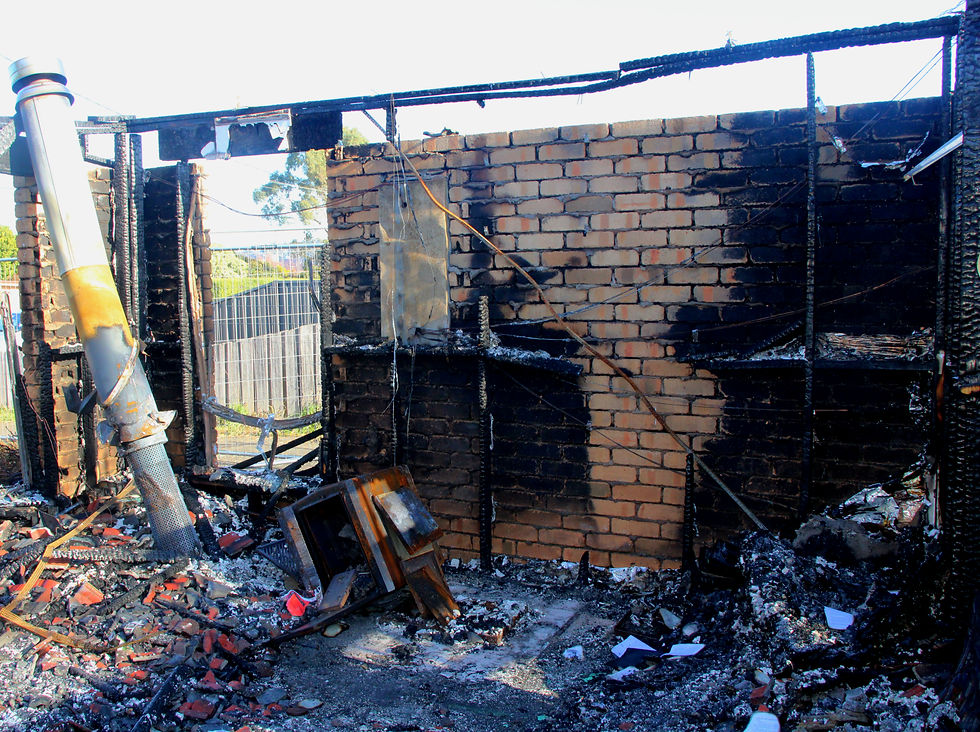Breaking In, Burning Down: When Vacant Buildings Burn
- Vithyaa Thavapalan
- Sep 12
- 2 min read
Applying the scientific method to uncover the truth behind a suspected arson.
A significant fire destroyed two adjoining vacant buildings at a property in rural New South Wales. The site consisted of three timber-framed structures: a shop, a set of bedrooms, and a separate living building. Only the shop and the bedroom quarters were directly affected by the fire.

Scene Examination
When we arrived, we found the shop completely gutted. Its interior walls and ceiling had collapsed, exposing the timber frame, while the front porch floorboards were heavily charred. A concrete block was discovered inside the front window, consistent with forced entry before the fire. The bedroom building had fared worse: catastrophic destruction left only parts of the external wall studs standing.
Interestingly, three external doors of the bedroom structure were found open, even though the insured’s son stated that all had been secured. The positioning of the hinges confirmed that the doors were open during the fire.


Area of Origin
Excavation revealed a large burn-through hole in the floor of the northernmost bedroom, with remnants of carpet around it. The scale of the floor damage suggested that an external fuel source, such as ignitable liquid or readily combustible materials, had been introduced to sustain the fire.
Laboratory testing of debris did not confirm the presence of ignitable liquids, but investigators noted that complete consumption of fuel during burning can leave no detectable residue.
Ruling Out Accidental Causes
The bedroom quarters had no electricity supply, ruling out electrical ignition. There were also no contents inside to act as fuel, reducing the likelihood of an accidental start. With these factors, coupled with evidence of entry and the placement of the concrete block, accidental ignition sources were effectively eliminated.
Conclusion
The investigation concluded that the two buildings were broken into and deliberately set alight. Though no direct evidence of an accelerant was found, it is most probable that a fuel was introduced to the bedroom quarters to ignite the fire.



Comments